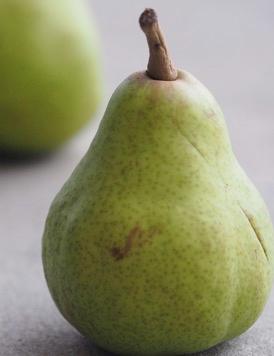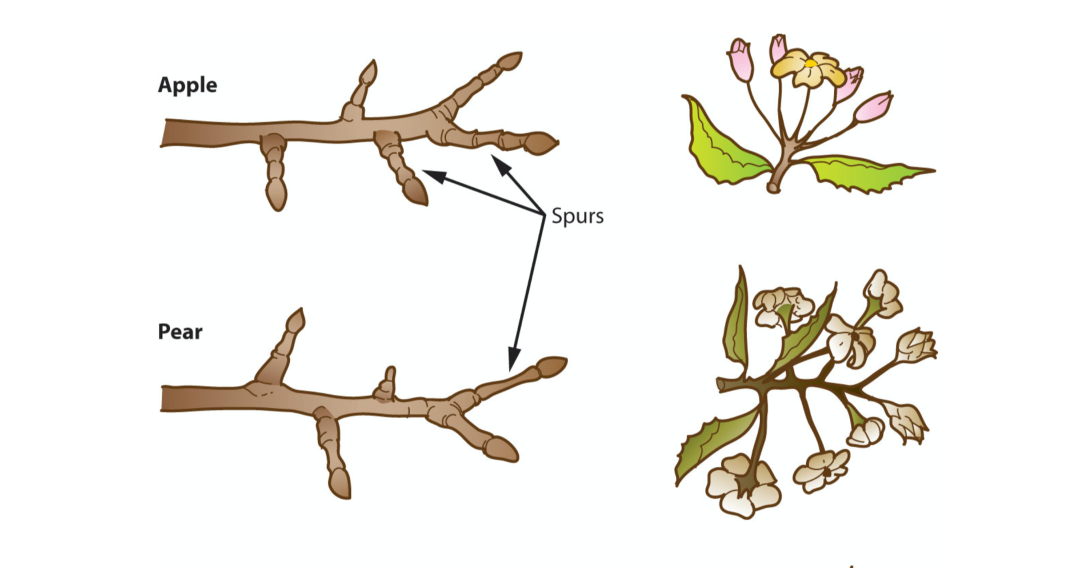Pear
-
Scientific NamePyrus
-
Special ConsiderationsPears are similar to apples, except that their branches tend to grow nearly straight up. It is necessary to keep these vertical branches shorter, both to make the fruit accessible and to encourage the growth of fruit spurs.
 Photo: Jess Bailey/Unsplash
Photo: Jess Bailey/UnsplashPears are very susceptible to fire blight, which can kill the tree if allowed to spread. Remove branches six to eight inches below the point that the disease begins (the lowest visual sign of disease on the branch). Dispose of the diseased branches in the trash. Do not recycle and do not compost.
Multi-grafted pears (trees with multiple pear varieties) require special attention, because some varieties grow more vigorously than others. As a result, branches that are allowed to grow too rapidly will sap strength from the less vigorous branches, causing them to produce few pears or to die.
-
Fruit grows on:
Old wood (spurs)
 Illustration shows how apples and pears flower on spurs. UC Master Gardeners Handbook
Illustration shows how apples and pears flower on spurs. UC Master Gardeners Handbook -
What to Prune in Winter
Remove dead, diseased or damaged wood.
Remove crossing branches.
Use thinning and releadering cuts to thin out new branches, especially in the interior, to reduce crowding and open the tree to sunlight from above. When deciding which branches to keep and which to remove, focus on even spacing throughout the tree.
Use heading cuts to shorten the young, remaining branches by two-thirds.
-
What to Prune in Summer
Reduce the height of tall branches to keep next year’s fruit within reach.
Remove or shorten crossing and crowded branches.
Remove or shorten lateral branches that are growing upright both to keep them from shading other branches and because upright branches also tend not to be fruitful.
Shorten laterals that are growing in desired directions to three to five buds or to approximately 10 inches.


